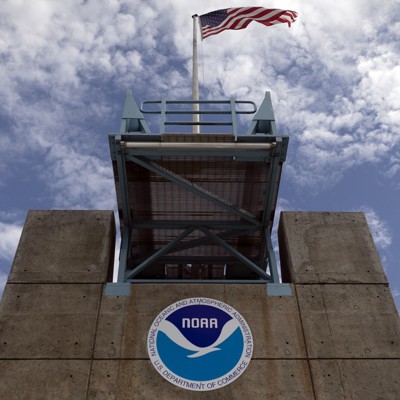Lawmakers in both chambers of Congress are pushing a proposal that would direct the National Oceanic and Atmospheric Administration to leverage artificial intelligence capabilities to better plan for wildfires and extreme weather events.
The legislation — introduced on Wednesday by Sens. Brian Schatz, D-Hawaii, and Tim Sheehy, R-Mont. — would explore the development and use of AI weather models “to project future Earth system conditions based on machine learning using weather forecasting training datasets.”
A companion bill was also introduced in the House on Wednesday by Rep. Scott Franklin, R-Fla. Schatz and Franklin both introduced similar proposals during the last Congress.
Within four years of the bill’s enactment, NOAA — in consultation with the Energy Department, NASA, the National Science Foundation and other relevant entities — would be directed to “develop and curate comprehensive weather forecasting training datasets with relevant Earth system data, quality information, and metadata necessary for weather forecasting.”
These datasets would, “to the greatest extent possible,” build upon the federal government’s “existing Earth system reanalysis datasets.”
The proposal also gives NOAA the leeway to pursue additional AI-related projects, including saying that the agency “may develop and test a global weather model” based on AI tools using its internal data and “may experiment with regional and local weather models based on artificial intelligence technologies.” Using these developed models, NOAA “may explore” using AI to also enhance information sharing related to weather and wildfires risks.
A press release announcing the bill’s introduction said it would also direct NOAA to “partner with the private and academic sectors on AI weather and wildfire forecasting, and innovate new AI weather and wildfire products and applications.”
Sheehy said in a statement that, by incorporating AI capabilities into NOAA’s forecasting and threat prediction models, “we will have the ability to know where, how big, and how bad weather is going to be, and can take preventative measures long before the impact is realized.”
NOAA has already been using some AI tools to enhance its weather forecasting and sharing capabilities.
During a conference last December, former NOAA administrator Rick Spinrad said the agency’s use of cloud computing and AI were already helping it better store and distribute collected data. The agency announced in October 2023 that it was also using AI to better translate weather forecasts into other languages, which it said at the time included Spanish and simplified Chinese.
The introduction of the legislation, however, comes as the Trump administration and the Elon Musk-led Department of Government Efficiency continue to conduct widespread layoffs and cost-cutting efforts across the federal government, which have also affected NOAA’s workforce and could further impact its weather forecasting capabilities.
In addition to hundreds of probationary employees let go across the agency, CNN reported on Friday that the White House’s budget proposal for 2026 would also, in part, close the agency’s weather and climate labs and eliminate its Office of Oceanic and Atmospheric Research.


